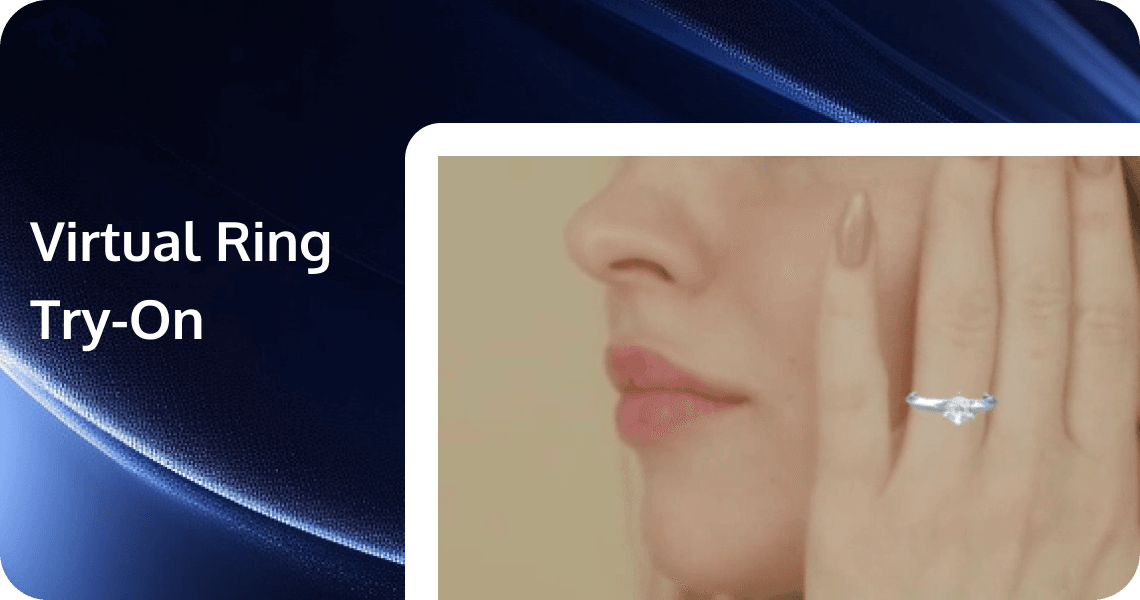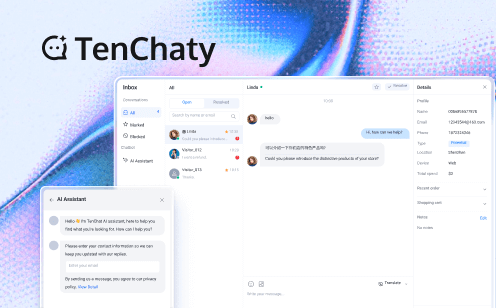
By leveraging next-generation WebAR solutions, virtual ring try-on is transforming how consumers shop for jewelry, driving engagement, and boosting business growth.
The Rise of Virtual Try-On in Jewelry Retail
The jewelry industry has long faced challenges in bridging the gap between online shopping and the tactile experience of in-store purchases. For high-value items like engagement rings or luxury bracelets, customers demand confidence in their choices, yet traditional e-commerce often fails to replicate the sensory experience of trying on a ring. Enter virtual ring try-on technology—a WebAR-driven solution that enables customers to visualize rings on their fingers in real time, with lifelike precision.
Powered by advanced AI recognition, 3D rendering, and cross-platform compatibility, virtual ring try-on solutions are not just a novelty but a strategic tool for boosting conversion rates, reducing returns, and enhancing brand loyalty. This article explores how this technology works, its applications, and why businesses must adopt it to stay competitive.
How Virtual Ring Try-On Technology Works
1. Advanced AI and Hand Tracking
Virtual ring try-on leverages 468-point hand tracking to map the user’s fingers, knuckles, and palm geometry. This ensures that rings dynamically adjust to hand movements, maintaining realistic proportions even when the user rotates their hand or flexes their fingers. For example, a diamond solitaire engagement ring will appear accurately scaled, with the stone orientation adapting to lighting conditions.
2. Real-Time 3D Rendering
High-fidelity 3D models of rings are rendered in real time using WebGL acceleration, ensuring smooth performance across devices. Users can inspect intricate details like gemstone facets, engraving patterns, or metal finishes (e.g., rose gold vs. platinum) from multiple angles.
| Technical Spec | Impact |
|---|---|
| Sub-millimeter precision | Avoids "floating ring" glitches; enhances realism. |
| 90 FPS rendering | Delivers fluid animations without lag. |
| GPU-optimized workflows | Runs seamlessly on low-end smartphones and browsers. |
3. Customizable Features
- Material Variations: Let users toggle between metals (gold, silver, titanium) and gemstone options (diamonds, sapphires).
- Sizing Adjustments: Integrate ring size guides to auto-resize virtual rings based on finger dimensions.
- Lighting Simulation: Show how diamonds sparkle under natural sunlight vs. indoor lighting.
Key Applications in the Jewelry Industry
1. E-Commerce Platforms
- Personalized Shopping: A customer browsing for wedding bands can upload a hand photo or use their camera to test how a pavé diamond band pairs with their engagement ring.
- Virtual Showrooms: Luxury brands like Cartier or Tiffany & Co. can offer immersive digital catalogs, reducing the need for physical inventory displays.
2. Bespoke Jewelry Design
Customers co-creating custom rings can preview design iterations in real time. For instance, adjusting the prong setting of a gemstone or mixing metals in a stackable ring set.
3. Social Media Marketing
- Instagram & TikTok Integration: Users share virtual try-on videos with branded hashtags, turning customers into influencers.
Business Benefits of Virtual Ring Try-On
1. Conversion Rate Boost
- Data Point: Brands using virtual try-ons report 35–50% higher conversion rates for jewelry products.
- Why It Works: Eliminates the uncertainty of online purchases. A user who sees a virtual ring on their hand is 70% more likely to buy.
2. Reduced Return Rates
Accurate sizing and realistic visualization cut returns by up to 40%, saving costs linked to logistics and restocking.
3. Enhanced Brand Perception
Luxury brands adopting this technology are perceived as innovative and customer-centric. For example, Signet Jewelers reported a 28% surge in online engagement after launching AR try-ons.
Why Choose Tencent RTC Virtual Try-On SDK Solution
1. Cross-Platform Accessibility
- No App Downloads: Customers access the experience directly via Safari, Chrome, or Edge.
- Device Agnostic: Functions on smartphones (iOS/Android), tablets, and desktops.
2. Cutting-edge technology
- Advanced AI Recognition: Leverage the power of our advanced AI recognition technology, offering 468 facial detail adjustments for impeccable precision.
- Real-Time Processing: Paired with ultra-fast real-time processing, our solution ensures a smooth, lag-free experience, delivering high efficiency in every frame.
3. Versatile WebAR Experience
Beyond our Virtual Try-On capabilities, our SDK includes Beautification Features, Face Filters, 2D/3D Stickers, Virtual Avatars, and Virtual Backgrounds, catering to users' diverse self-expression needs.
4. Privacy Compliance
All hand/finger data is processed locally on the device, complying with GDPR and CCPA regulations.
Conclusion
Virtual ring try-on is no longer a futuristic concept—it’s a necessity for jewelry brands aiming to thrive in the digital age. By combining AI precision, WebAR accessibility, and immersive user experiences, this technology bridges the gap between online convenience and in-store confidence. Brands that adopt it now will not only captivate today’s shoppers but also future-proof their businesses against evolving retail trends.


